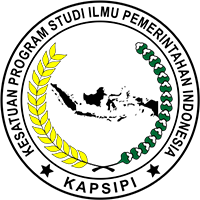Portrait of the Three Pillars of Food Security in Riau Province
DOI:
https://doi.org/10.35967/njip.v23i1.666Keywords:
Food Access, Food Availability, Food Security Pillars, Food Utilization, Riau ProvinceAbstract
This article will analyze the three pillars of food security in Riau Province and the factors that influence the fulfillment or non-fulfillment of these pillars. It will also outline the impact on vulnerable groups such as women and children if food security is not met. This research employs a qualitative method with data collection through literature analysis and selected documents such as journals, annual reports, and official documents released by governmental or non-governmental agencies. Speaking of factors influencing food security, there are four determining factors: government, economic access, environment, and global/international conditions. However, for food security in Riau, poverty and the environment are the two determining factors and are the main priorities for analysis in this article, including how the Riau Provincial Government responds to these conditions. The article demonstrates that in the pillar of food availability, the quantity and consumption of food are determining factors that impact the occurrence of malnutrition, undernutrition, and even stunting in children. Poverty and the environment are the main determinants of unmet food security in the pillar of food access, with the environmental factors being influenced by deforestation and population growth. Meanwhile, in the pillar of food utilization, the amount of energy consumption is the determining element.
Downloads
References
Adams, F. (2020). The Right to Food: The Global Campaign to End Hunger and Malnutrition. Springer International Publishing. https://doi.org/10.1007/978-3-030-60255-0
Badan Pangan Indonesia. (2022). Peta Ketahanan dan Kerentanan Pangan Provinsi Riau. Badan Pangan Indonesia. https://fsva.badanpangan.go.id/
Beretta, C., Stucki, M., & Hellweg, S. (2017). Environmental Impacts and Hotspots of Food Losses: Value Chain Analysis of Swiss Food Consumption. Environmental Science and Technology, 51(19), 11165–11173. https://doi.org/10.1021/acs.est.6b06179
Cameron, L., Chase, C., Haque, S., Joseph, G., Pinto, R., & Wang, Q. (2021). Childhood Stunting and Cognitive Effects of Water and Sanitation in Indonesia. Economics & Human Biology, 40, 100944. https://doi.org/10.1016/j.ehb.2020.100944
Deaton, A. (2007). Height, Health, and Development. In R. A. Easterlin (Ed.), Proceedings of the National Academy of Sciences of the United States of America (Vol. 104, Issue 33, pp. 13232–13237). National Academy of Sciences. https://doi.org/10.1073/pnas.0611500104
Dinkes Riau. (2022). Prevalensi Balita Gizi Buruk di Kabupaten/Kota di Provinsi Riau Tahun 2022. Dinkes Riau.
Donelan, J. (2019). The State of 8K. Information Display, 35(1), 17–19. https://doi.org/10.1002/msid.1007
Eppig, C., Fincher, C. L., & Thornhill, R. (2010). RETRACTED: Parasite Prevalence and the Worldwide Distribution of Cognitive Ability. Proceedings of the Royal Society B: Biological Sciences, 277(1701), 3801–3808. https://doi.org/10.1098/rspb.2010.0973
Fogel, R. W. (1997). New Findings on Secular Trends in Nutrition and Mortality: Some Implications for Population Theory. In Handbook of Population and Family Economics (Vol. 1, Issue PART A, pp. 433–481). Elsevier. https://doi.org/10.1016/S1574-003X(97)80026-8
Gooch, M. (2010). Food Waste in Canada: Opportunities to Increase the Competitiveness of Canada’s Agri-Food Sector, While Simultaneously Improving the Environment. Value Chain Management Centre.
Harris, B. (2006). R.W. Fogel, The Escape from Hunger and Premature Death, 1700–2100: Europe, America and the Third World, Cambridge University Press, Cambridge, 2004, ISBN 0-521-00488-8. Economics & Human Biology, 4(1), 147–149. https://doi.org/10.1016/j.ehb.2005.03.001
Harrison, B. C. (2015). Power & Society: An Introduction to the Social Sciences. Cengage Learning.
Ishak, I. M., Rapanna, P., & Anwar. (2021). Effectiveness of Poverty Management in Indonesia. International Journal of Innovative Science and Research Technology, 6(8), 489–495. https://ijisrt.com/effectiveness-of-poverty-management-in-indonesia
Judge, T. A., & Cable, D. M. (2004). The Effect of Physical Height on Workplace Success and Income: Preliminary Test of a Theoretical Model. Journal of Applied Psychology, 89(3), 428–441. https://doi.org/10.1037/0021-9010.89.3.428
Lynn, R. (1990). The Role of Nutrition in Secular Increases in Intelligence. Personality and Individual Differences, 11(3), 273–285. https://doi.org/10.1016/0191-8869(90)90241-I
Nizmi, Y. E., Wahyudi, H., Syahputra, H. W., Hasibuan, A. I. R. S., Yulia, R., & Takwa, T. K. (2024). Counterproductive Food Waste and Portrait of Poverty, Stunting, and Food Insecurity in Riau Province. Jurnal Ilmu Sosial dan Humaniora, 13(1), 166–174. https://doi.org/10.23887/jish.v13i1.74849
Pritchard, B., Mackay, H., & Turner, C. (2017). Special issue introduction: geographical perspectives on food and nutrition insecurity in the global South. Geographical Research, 55, 127–130. https://doi.org/10.1111/1745-5871.12227
Ringen, S. (1985). [Review of Poverty and Famines. An Essay on Entitlement and Deprivation, by A. Sen]. European Sociological Review, 1(1), 94–96. https://www.jstor.org/stable/522474
Satu Data Ditjen PHL. (2018). Satu Data SI PHPL. https://phl.menlhk.go.id/statistik/statistik-ditjen-phpl-2018/
Statistics of Riau Province. (2022). Provinsi Riau dalam Angka 2022. Statistics of Riau Province. https://riau.bps.go.id/id/publication/2022/02/25/85c4ce5fd9662f99e34a5071/provinsi-riau-dalam-angka-2022.html
Downloads
Published
How to Cite
Issue
Section
License
Copyright (c) 2024 Author(s)

This work is licensed under a Creative Commons Attribution-NonCommercial-ShareAlike 4.0 International License.





